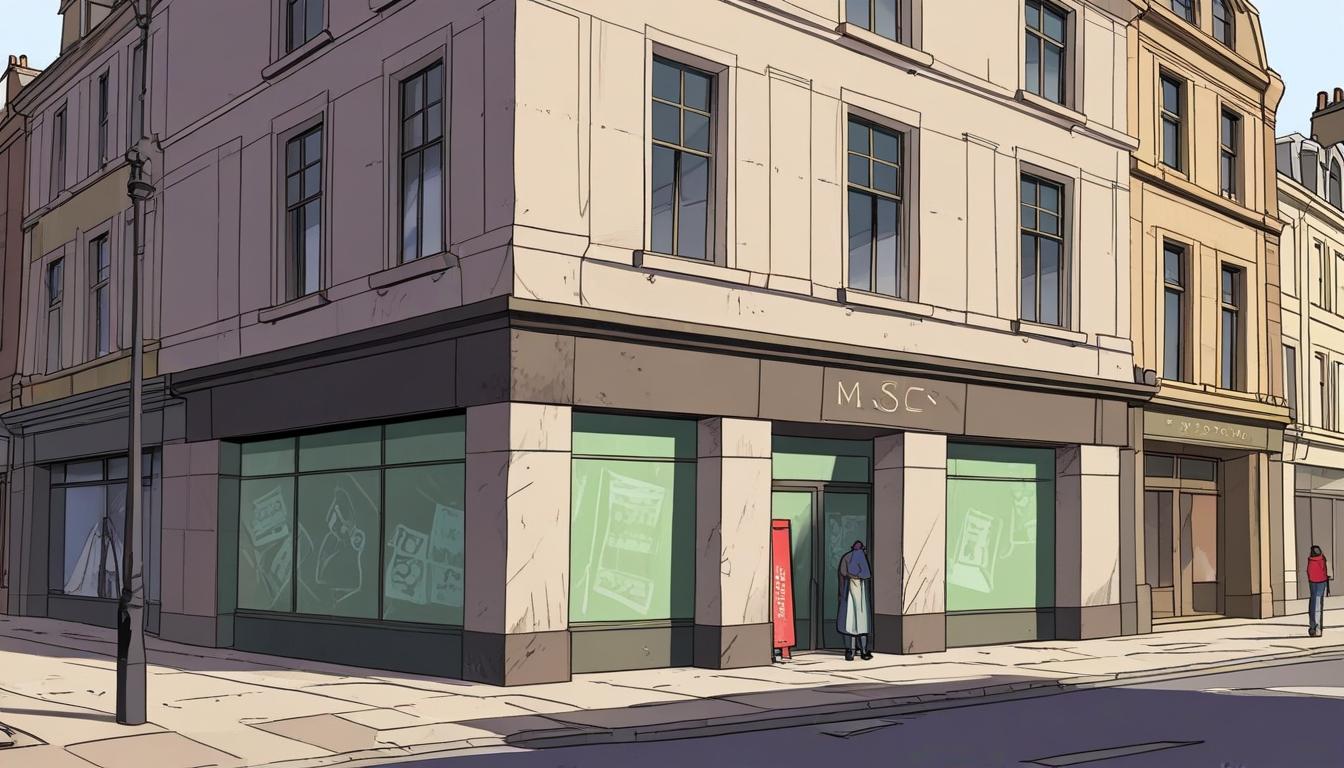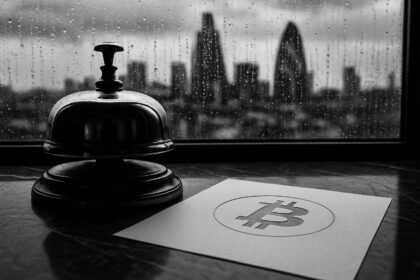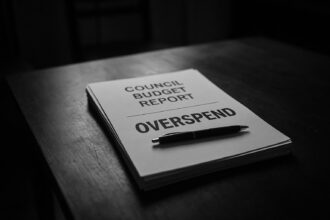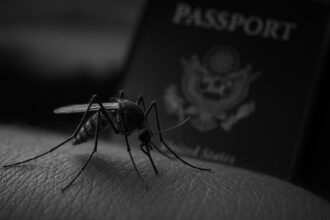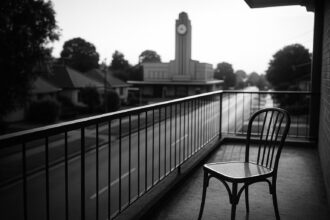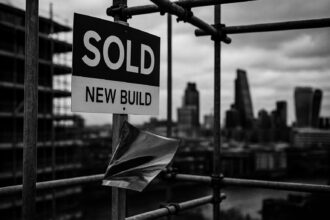Aberdeen bids farewell to the Marks & Spencer outlet on St Nicholas Street as the retailer accelerates plans to expand its Union Square store with a £30 million investment, amid concerns over city centre vacancies and calls for revitalising Union Street into a modern, pedestrian-friendly hub.
Another chapter has closed in the ongoing saga of Aberdeen’s high street, as the Marks & Spencer store on St Nicholas Street ceased operations ahead of schedule last week. This closure, part of M&S’s broader strategy to consolidate its retail presence, serves as a stark reminder of the challenges faced by traditional retailers. With a history stretching back to 1944, this outlet was once a cornerstone of Aberdeen’s shopping landscape, emblematic of the vibrant city centre of yesteryear. T.S. Eliot’s words resonate in this context: “not with a bang, but with a whimper,” a fitting description for the muted end of an era that has seen the decline of several high-profile retail entities in the area.
Located just off Union Street, the St Nicholas Street store’s closure coincides with the impending unveiling of an expanded M&S outlet at Union Square, a site that has garnered considerable investment. The company has pledged a £30 million commitment to the Scottish market, of which £15 million is earmarked for enhancing the Union Square branch. Scheduled for completion in spring 2025, this redevelopment aims to nearly double the existing store’s size, introducing a modern market-style food hall, expanded departments, and various new features designed to enhance the shopping experience.
In a positive note for the workforce, M&S assures that no permanent jobs will be lost in Aberdeen, as employees are being offered transfers to the new flagship store or nearby locations. This is crucial for maintaining local employment levels amidst a shifting retail landscape, where shop closures can have far-reaching implications for communities, particularly vulnerable populations such as the elderly and disabled. Concerns have been raised about the accessibility of the Union Square location, which not only presents logistical challenges but may also deter certain customer demographics.
As the Union Street area grapples with the collective weight of escalating vacancies—the closures of Debenhams, John Lewis, and now M&S contribute to what some have termed an “Unholy Trinity” of empty department stores—there is a palpable need for rejuvenation in this once-thriving commercial corridor. While the sunlit streets were bustling with foot traffic recently, the underlying anxieties about the future of retailing remain. With shopping trends increasingly leaning towards online purchasing, the pressing question is: what will lure consumers back into physical stores?
The answer may lie not just in the retail offerings but in the overarching urban fabric of Aberdeen itself. As the city explores potential long-term strategies for revitalisation, innovative concepts are being floated. There is dialogue surrounding the possibility of turning Union Street into a pedestrian-friendly boulevard adorned with greenery, designed to attract students and young professionals to live and thrive within the vicinity. Such a transformation could intertwine residential spaces with vibrant nightlife, culinary pursuits, arts, and tourism, fostering a renewed connection between locals and their city.
However, the path to a dynamic urban centre is fraught with challenges. The notion of repurposing existing commercial spaces, rather than simply demolishing them, speaks to a more sustainable approach to urban planning. In this “Unreal City,” as some have described Aberdeen, the spectre of empty retail spaces looms large. Yet, amid these shadows also lies an opportunity to reinvent and adapt, to breathe new life into stagnant spaces, and to redefine how residents and visitors engage with the city centre.
Colin Farquhar, a creative spaces manager and film programmer within the north-east culture sector, encapsulated the sentiment well in a recent reflection: the future of these vacant storefronts is not predefined; rather, it holds the potential for myriad transformations. With a bold vision, urban intervention, and community collaboration, Aberdeen can navigate this challenging chapter and emerge not just as a city of retail challenges, but as a renewed hub of social and economic vitality.
Reference Map
- Paragraph 1: [1]
- Paragraph 2: [2], [3]
- Paragraph 3: [5], [6]
- Paragraph 4: [4], [7]
- Paragraph 5: [5]
- Paragraph 6: [1]
- Paragraph 7: [1]
- Paragraph 8: [1]
Source: Noah Wire Services
- https://www.pressandjournal.co.uk/fp/news/6755796/colin-farquhar-marks-and-spencer-union-street/ – Please view link – unable to able to access data
- https://www.bbc.co.uk/news/articles/ce7k7083n9ko – In January 2024, Marks & Spencer (M&S) announced the closure of its St Nicholas Street store in Aberdeen as part of a £30 million investment plan in Scotland. The £15 million expansion of the Union Square store is scheduled to be completed in spring 2025, after which the St Nicholas Street store will close. M&S stated that there would be no loss of permanent jobs in Aberdeen due to the move. The St Nicholas Street branch is located just off Union Street, which was once the city’s flagship retail zone.
- https://www.heraldscotland.com/news/24058302.marks-spencer-close-major-store-aberdeen-city-centre/ – Marks & Spencer (M&S) has announced the closure of its long-standing store on Aberdeen’s St Nicholas Street as part of a £30 million investment in Scotland. The £15 million expansion of the Union Square store is expected to be completed in spring 2025, making it the fourth largest M&S in Scotland. The St Nicholas Street store has been a major presence in Aberdeen city centre since 1944. M&S stated that all permanent staff would transfer to the Union Square store or other nearby locations next year.
- https://www.aberdeenlive.news/news/aberdeen-news/aberdeen-tk-maxx-unveils-plans-9083337 – Plans have been submitted for TK Maxx to relocate within Aberdeen’s Union Square shopping centre to accommodate the £15 million expansion of the Marks & Spencer (M&S) store. The expansion aims to nearly double the size of the Union Square M&S store, which is scheduled to be completed by spring 2025. The new M&S store will feature a spacious fresh market-style food hall, a flower shop, a cheese barge, a larger in-store bakery, and dedicated M&S Wine Shop, as well as expanded clothing, home, and beauty departments.
- https://www.pressandjournal.co.uk/fp/news/aberdeen-aberdeenshire/6343347/mark-and-spencer-aberdeen-city-centre-closure/ – Aberdeen pensioners have expressed concerns over the closure of the city centre Marks & Spencer (M&S) store on St Nicholas Street. The flagship store is set to close in 2025 as part of a £15 million expansion of the Union Square branch. Elderly and disabled shoppers fear that the relocation will make shopping more challenging, as the Union Square store is less accessible by public transport. M&S stated that the £15 million investment at Union Square is the largest city centre cash injection from a private entity in years.
- https://www.pressandjournal.co.uk/fp/news/aberdeen-aberdeenshire/6341113/ms-aberdeen-closure/ – Marks & Spencer (M&S) has confirmed the closure of its St Nicholas Square store in Aberdeen in 2025. The £15 million expansion of the Union Square outlet is expected to be completed by spring 2025. The expansion will nearly double the size of the Union Square store, creating space for a market-style food hall, flower shop, larger bakery, clothing and beauty departments, and a wine shop. M&S stated that the £15 million investment at Union Square is the largest city centre cash injection from a private entity in years.
- https://www.pressandjournal.co.uk/fp/news/aberdeen-aberdeenshire/6343333/marks-and-spencer-aberdeen-store-closure-reaction/ – Following the announcement of the closure of Marks & Spencer’s flagship store in Aberdeen, readers have shared their thoughts on the news. The St Nicholas Street store has been serving customers for over 80 years. The closure is part of a £15 million expansion of the M&S store at Union Square, which is scheduled to reopen in spring 2025. The expansion will nearly double the size of the Union Square store, creating space for a market-style food hall, flower shop, larger bakery, clothing and beauty departments, and a wine shop.
Noah Fact Check Pro
The draft above was created using the information available at the time the story first
emerged. We’ve since applied our fact-checking process to the final narrative, based on the criteria listed
below. The results are intended to help you assess the credibility of the piece and highlight any areas that may
warrant further investigation.
Freshness check
Score:
8
Notes:
The narrative is recent, focusing on the closure of Marks & Spencer’s St Nicholas Street store and the expansion of the Union Square outlet. The content is timely and relevant to ongoing retail changes in Aberdeen.
Quotes check
Score:
6
Notes:
The quote from T.S. Eliot is well-known and widely used. However, the specific quote from Colin Farquhar seems original but lacks a clear online source. It is likely a first-hand reflection rather than a recycled quote.
Source reliability
Score:
7
Notes:
The narrative originates from the Press and Journal, a local Scottish newspaper. While it is a reputable regional publication, it may not have the same level of international recognition as larger news outlets like the BBC or Financial Times.
Plausability check
Score:
9
Notes:
The claims about Marks & Spencer’s store closure and expansion are plausible given current retail trends and the company’s strategies. The discussion on urban revitalisation and challenges in Aberdeen is also reasonable.
Overall assessment
Verdict (FAIL, OPEN, PASS): PASS
Confidence (LOW, MEDIUM, HIGH): MEDIUM
Summary:
The narrative is fresh and pertains to current events in Aberdeen, with plausible claims and quotes. However, the lack of a clear online source for Colin Farquhar’s quote and the reliance on a regional publication slightly reduce confidence.


